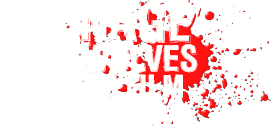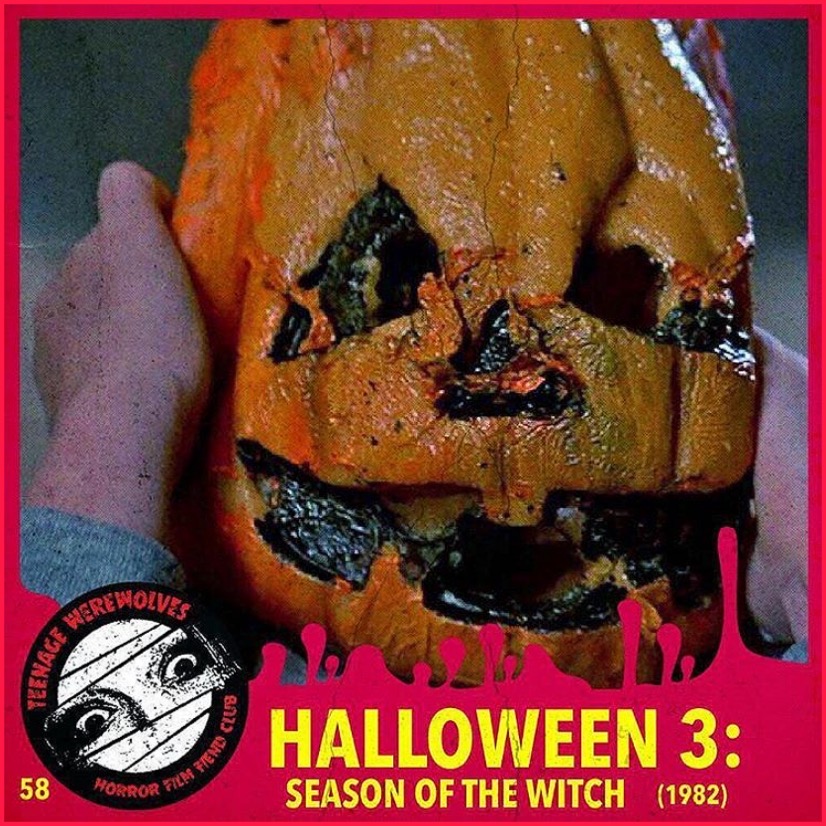(Tommy Lee Wallace, 22 October 1982)
“I do love a good joke and this is the best ever: A joke on the children.”
Perhaps you’re like us and you’ve defended HALLOWEEN III: SEASON OF THE WITCH your entire life — often making you the butt of horror-jokes and taunts of “8 more days, Loser!” — and you eye all those Johnny-come-lately’s who now see fit to proselytize its pure autumnal majesty with just a little more than overt suspicion. We don’t judge, we don’t hold grudges…so welcome to the party, everyone; we’ve been waiting for you since 1982.
Released on 22 October 1982, John Carpenter, Deborah Hill, and Tommy Lee Wallace left most audiences scratching their heads — especially executive. producer of the first two installments, Irwin Yablans, who found the idea of a HALLOWEEN film without Michael Myers incomprehensibly “stupid” (but who did, however, enjoy his pay-check). We all know this story, so there is very little use in rehashing it here. But what is worth repeating is the sad reality that turning the HALLOWEEN franchise into a seasonal anthology series, offering up-and-coming directors the opportunity to, essentially, have the original filmmaking experience that John Carpenter himself had and resulting in a new film chock full of whatever unholy things were ripe for the plucking presented to all us October people…every year…is a remarkably brilliant idea (close your eyes and summon to your mind’s eye just what that might have yielded). The world of 1982, however, was not ready for such an idea. Today’s market, on the other hand sees the anthology series — for both large and small screen — as one of the more bankable approaches, offering diverse opportunities for filmmaker and actor alike. It is almost a shame that the 2018 Blumhouse resuscitation of Haddonfield, Myers, and everything else Shape-related would not have picked up the dropped gauntlet and taken a risk on such an idea, perhaps even a traditional anthology film, where segments would have centered around the holiday, and perhaps featured Myers in some myriad of ways, rather than the revisionist sequel we were given. The Dennis Etchison novelization of HALLOWEEN III (credited under the pseudonym Jack Martin) actually does involve Myers, we see him a few times obfuscated by shadows, or mentioned in pure implication as our road-weary hero, Dr. Dan Challis, stops off to buy masks for his estranged children…there is the shadow…the shape of a man, furtively lumbering in an inexorable gait…and shape we know to be Myers. It is a novel approach, and actually adds some additional tension to the novel, but of course would have muddied a screen-play already rife with a multitude of inventive ideas. (In addition, the death of Irish toy magnate and resident villain, Conal Cochran, is also handled differently, featuring the implication of mystic teleportation rather than an archetypal balance-restoring death.)
It would be difficult to charge Tommy Lee Wallace and the several hands that toiled upon the several drafts of what eventually went before the cameras rolled in Loleta, California, with a lack of ideas (and, in fact, Wallace maintains he didn’t have much to do with a majority of the final screenplay and feels it is a crime that he receive sole writing credit); in fact, it is a film bursting with ideas, and perhaps some that work better than others. What may not have been expected is the critical condemnation of corporate culture laced throughout the plot, as ever-present as the snakes, crickets, and other creepy-crawlies emerging form the melting jack-o-lantern that was once young Buddy Kupfer, Jr.’s head. In addition to the ironies of Conal Cochran using the commercial excesses of Halloween he seems to denounce as the very weapon, Wallace’s film conjures some insidious evils about the absence of validity within our modern traditions as we march forward toward progress, or, at the very least, failing to recognize the importance of the Halloween season’s pagan roots. Ultimately, Wallace’s technologically-laced tale of “witchcraft in the 20th century” is quite unique, and in some ways does defy categorization. At its core, it is a narrative where a frustrated, old toymaker’s empire diversifies from joy-buzzers and “the dead dwarf gag” to the eventual construction of life-like androids, the wholesale occupation of an entire company town (playing much more like something out of Orwell’s playbook), and the annihilation of the young using television frequencies and some technological necromancy; author Nigel Kneale’s (of QUATERMASS fame, and who was not only hired by Carpenter directly and, despite asking that his name be removed from the final film so as not to sully its prestige, also gets several overt nods in Carpenter’s PRINCE OF DARKNESS, five years later) original treatment easily places Wallace’s film in the sci-fi genre. In fact, in the October 1982 issue of Fangoria, producer Deborah Hill declared that the film was very much intended to be “a pod movie” akin to THE INVASION OF THE BODY SNATCHERS rather than “a knife movie.” In the end, HALLOWEEN III certainly plays better as a cheeky satire of the late 20th century’s business sense where Machiavellian obsession and the lust for perverted ideals eclipses that of the bottom line than a horror shocker or out-and-out slasher. In his Halloween: From Pagan Ritual to Party Night, historian Nicholas Rogers notes Cochran’s Cochran’s “astrological obsessions” of the old world and “psychotic hatred of children overrode his business sense,” making for an anti-corporate message at odds with even the multi-million dollar affair that the season of ghosts and goblins has become become, with 2019 seeing a rise in profits to the tune of $8.8 billion. Imagine just how many of Stonehenge’s sacrificial stones of immense otherworldly power that budget could import, Cochran. Science-fiction underpinnings and arguments for a cynical chiding of consumer culture, what happens to poor Marge Gutman’s face and poor Buddy Jr.’s head (as well as, presumably, all the other children around the world) is pure horror. And there are a great many moments when HALLOWEEN III does give us exactly what the discerning genre fan demands…so many of them just didn’t know it at the time.
From the iconic score — one of Carpenter and Howarth’s finest — to the inclusion of not only those classic Don Post Studios masks, but footage of the actual factory floors of the famous mask-maker, HALLOWEEN III: SEASON OF THE WITCH continues to entertain. Actor Tom Atkins is one of the strongest elements here, play Dr. Dan Challis like a bottomed-out, Bukowski-esque man of medicine, more apt to skip out of town with a six-pack and a grieving young woman than keep his responsibilities to his children; it is a grim dichotomy that works, and Atkins becomes not only an unlikely leading man, but an unlikely hero as well, where he is far more Humphrey Bogart’s Sam Spade than he is Father Knows Best. Find time to honor all the poor children that more than likely lost their lives so many years ago: switch on the ol’ Tube, throw on your mask, grab a beverage…and relax. Just remember that the third channel, is still running. Stop it, please, for God’s sake, please stop it. There’s no more time! Please stop it. Stop it now. Turn it off! Stop it! STOP IT!

